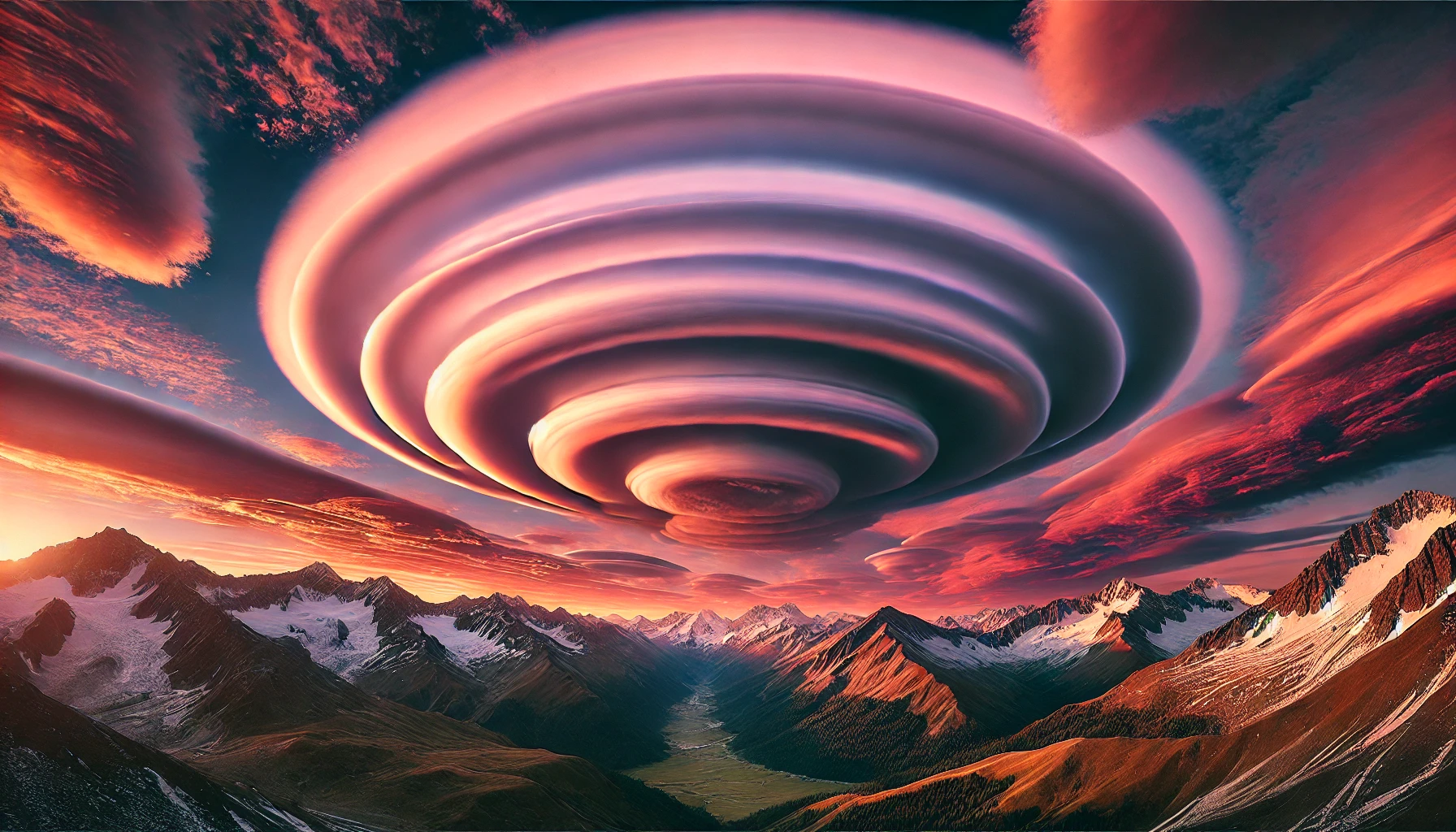Lenticular clouds are one of the most awe-inspiring and visually striking natural phenomena. These lens-shaped clouds often resemble flying saucers or stacked pancakes, making them a favorite among photographers and sky watchers. Here’s everything you need to know about these fascinating formations.
What Are Lenticular Clouds?
Lenticular clouds (Altocumulus lenticularis) are stationary clouds that form at high altitudes, typically over mountains or hills. Their unique, smooth appearance is due to the way air flows over and around elevated terrain.
How Do Lenticular Clouds Form?
- Airflow Over Mountains: When moist air flows over mountains, it creates a series of oscillations as it moves up and down.
- Condensation: As the air cools during its upward movement, water vapor condenses to form clouds.
- Stationary Formation: Lenticular clouds remain stationary even as the air flows through them, giving them their characteristic shape.
Where Can You See Lenticular Clouds?
Lenticular clouds are most commonly seen in areas with significant topography. Some notable locations include:
- Mount Rainier, USA
- Known for spectacular displays of lenticular clouds.
- Andes Mountains, South America
- A hotspot for lenticular formations due to consistent airflow.
- Himalayas, Asia
- The towering peaks create ideal conditions for lenticular clouds.
- Table Mountain, South Africa
- Frequently accompanied by dramatic cloud formations.
Why Are Lenticular Clouds Important?
- Weather Indicators: These clouds can indicate strong winds in the atmosphere, making them useful for weather prediction.
- Aviation Caution: Lenticular clouds are associated with turbulence, posing challenges for pilots.
- Photographic Appeal: Their stunning, alien-like appearance makes them a popular subject for photographers.
Fun Facts About Lenticular Clouds
- Lenticular clouds are often mistaken for UFOs due to their unusual shape.
- They can appear in layers, creating a stack-like effect that’s both dramatic and surreal.
- Pilots of glider planes seek out lenticular clouds for the strong updrafts that form beneath them.
How to Capture Lenticular Clouds in Photos
- Use a Wide-Angle Lens: Capture the full scope of the cloud and its surroundings.
- Incorporate Landscape Elements: Include mountains or hills to emphasize the scale and formation.
- Best Times: Early morning or late afternoon lighting enhances their texture and colors.
Lenticular clouds are not only a marvel of meteorology but also a reminder of the intricate interplay between Earth’s terrain and atmosphere. Whether you’re an adventurer, a photographer, or simply a nature enthusiast, witnessing lenticular clouds is an unforgettable experience.


1 thought on “Lenticular Clouds: Nature’s Stunning Optical Illusion”